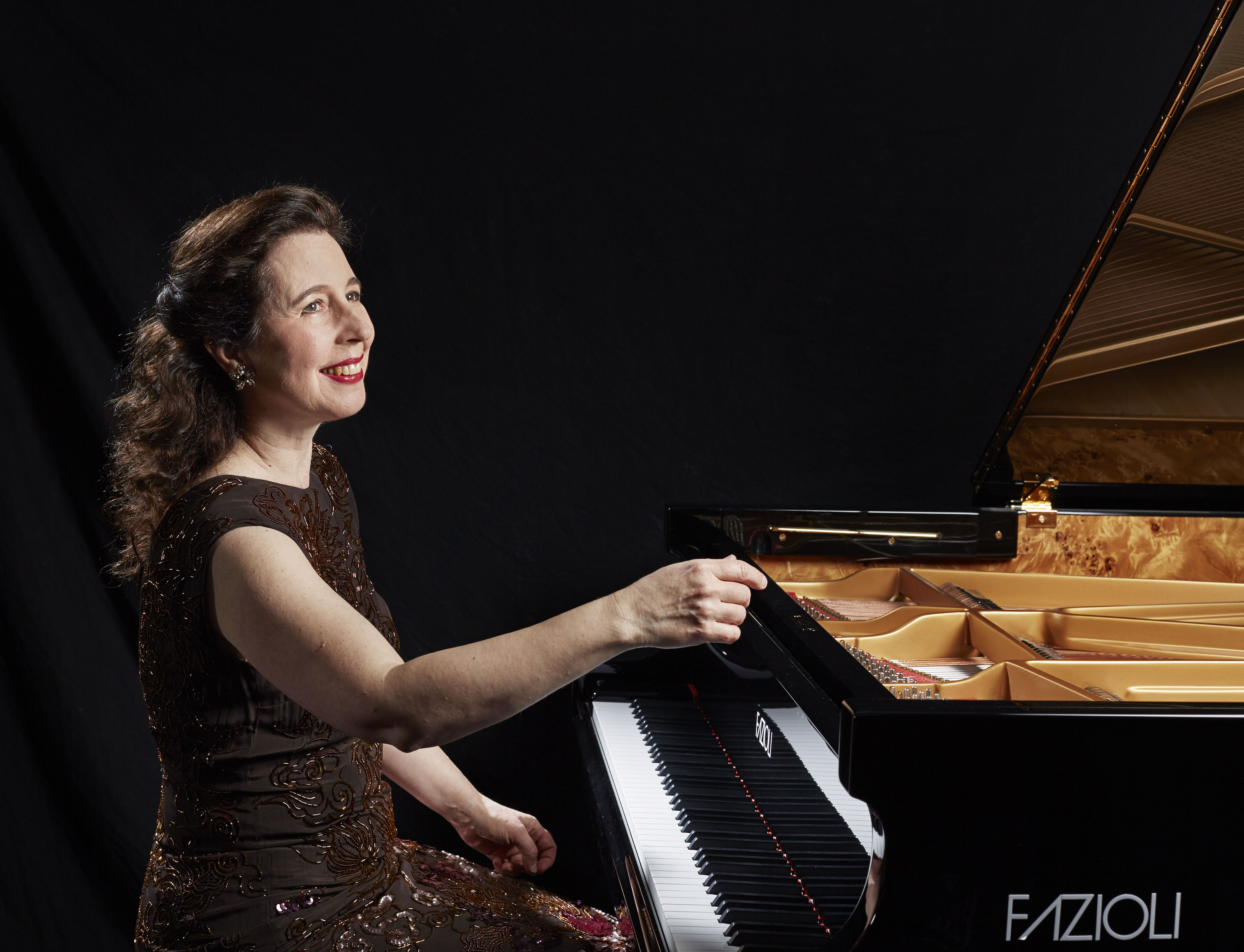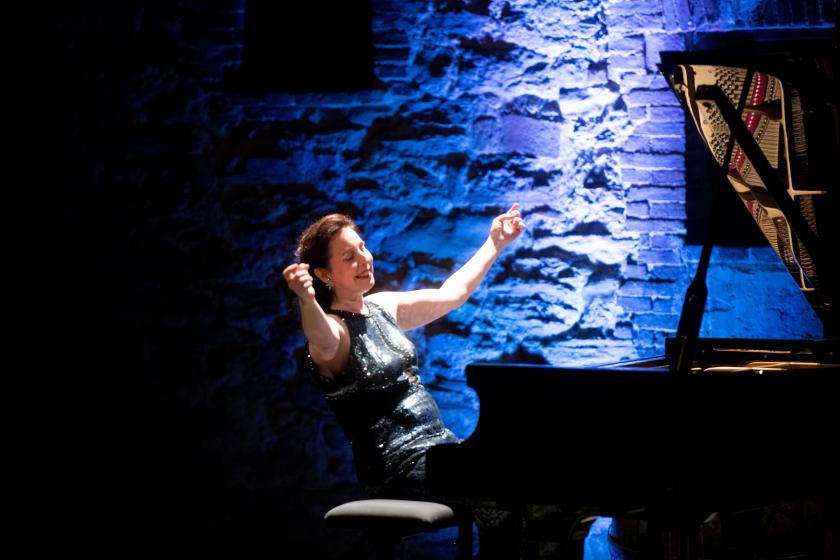The four years of Angela Hewitt’s globe-trotting “Bach Odyssey” confirmed time and again that she brings a nonpareil artistry and authority to the most demanding, and rewarding, of all keyboard repertoires. Yet the Canadian pianist, as we already knew, carries plenty of other arrows in her musical quiver. At the Wigmore Hall on Saturday, her mixed programme blended some choice Bach – four selections from the Well-Tempered Clavier’s second book – with a brace of Mozart sonatas, along with works by Ravel and Chabrier. Her recordings of the latter pair’s solo piano pieces emphatically prove her sympathetic flair when it comes to fin-de-siècle French spellbinders.
It also spotlit that famous Fazioli piano sound. When movers smashed her original, cherished instrument in 2020, the mishap became – perhaps to her embarrassment – a globally-reported episode of musical soap-opera. Its replacement, though, sounds equally fine, even if the celebrated responsiveness and sensitivity of Paolo Fazioli’s top-dollar creations – the Ferraris of the keyboard track, if you credit his cheerleaders – can only reflect the gifts of the driver behind the wheel (as it were). As ever, Hewitt drew an astonishing degree of lustre, clarity and radiance from the instrument: perfectly balanced through the octaves, with right and left hand voices in a satisfying equilibrium, bright in the bass and pin-sharp at the top. It was powerful, predictable and penetrating. At moments, you gasp as if a varnished and over-painted Renaissance panel has just been cleaned to disclose the dazzling colours underneath. Does this freshness and transparency bring with it some loss of shade, warmth and nuance? Just occasionally, I did feel too much exposed to the fierce light of noon. Hewitt’s bold, though not brash, dynamics further banished any lingering shadows. This was pianism free of smoke and mirrors. Also, perhaps, of a little mystery.
 Not that Bach would have much minded. Her chosen chunk of the Well-Tempered Clavier Book II turned the preludes and fugues numbers 13 to 16 (F#, F# minor, G and G minor) into a kind of self-standing keyboard concerto. Beautifully controlled fingerwork combined with interpretative poise and lucidity to signpost this sequence as a journey that made sense on its own terms. Hewitt [pictured above by Keith Saunders] mapped a path from the lively, dotted “French” rhythms of the F sharp prelude through the sinuous, mysterious aria that opens F sharp minor, right through to the sombre, even granitic, declamations that punctuate the G minor Largo. Her playing had might and muscularity – not to mention a consistent rhythmic verve – to spare. Partisans of a WTC that can find room for passages of a more romantically-coloured lyricism might have felt in need of a few softer edges. That said, the G minor fugue seemed to rise out of the earth with a thrilling, almost monstrous, tread.
Not that Bach would have much minded. Her chosen chunk of the Well-Tempered Clavier Book II turned the preludes and fugues numbers 13 to 16 (F#, F# minor, G and G minor) into a kind of self-standing keyboard concerto. Beautifully controlled fingerwork combined with interpretative poise and lucidity to signpost this sequence as a journey that made sense on its own terms. Hewitt [pictured above by Keith Saunders] mapped a path from the lively, dotted “French” rhythms of the F sharp prelude through the sinuous, mysterious aria that opens F sharp minor, right through to the sombre, even granitic, declamations that punctuate the G minor Largo. Her playing had might and muscularity – not to mention a consistent rhythmic verve – to spare. Partisans of a WTC that can find room for passages of a more romantically-coloured lyricism might have felt in need of a few softer edges. That said, the G minor fugue seemed to rise out of the earth with a thrilling, almost monstrous, tread.
Before and (post-interval) after the Bach, two Mozart sonatas let us glimpse the urbane elegance that Hewitt also commands. These twin pieces, K332 and K333, date from just after Mozart’s marriage. Hewitt packed them with a festive charm that never cloyed. Nimble variations of tempi and dynamics meant that the repetitions retained an element of witty surprise. Meanwhile, she made an exhilarating case for K333 as a high-spirited little masterpiece: half a sort of solo concerto, half a trip to the opera house for a clutch of (gorgeous) songs without words. The closing Allegretto grazioso rondo spun airy marvels of debonair decoration over a simple, even folksy, heart.
With her French selections, Hewitt changed mood while allowing the subtler colours of her pianism to unfold. Still, if Ravel’s Sonatine had a so-far-unheard density of chromatic shading, you always grasped an underlying clarity of outline. Even in the crossed-hands torrents and cascades of its final toccata, marked Animé, the crystalline ripple and flow of the playing brought the core neo-classicism of Ravel – his debt to the sound-world of Rameau and Couperin – very much to the fore. Hewitt rounded off her miscellany with Chabrier’s Bourrée fantasque of 1891: a firework-box of pianistic sparklers ignited here with infectious wit and panache. Jeu d’esprit hardly covers the sheer acrobatic cheek of the piece. Hewitt made its virtuoso drollery a circus performance to savour, each high-wire stunt pulled off with genial aplomb. A few sceptics, however, might still have thought that this evening of Fazioli-powered upfront brilliance lacked a touch of lyric tenderness. As if to answer them, Hewitt sent us out into the brightly moonlit night with an encore of Debussy’s Clair de lune. Although she never does schmaltz, she found a glowing warmth under the silvery sheen – right up until the hypnotic slow fade of those final notes.














Add comment